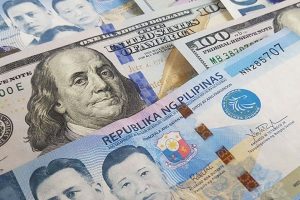$531-million ‘hot money’ exits Philippines in February

MORE short-term foreign funds left the Philippines in February, ending four straight months of inflows, based on data from the Bangko Sentral ng Pilipinas (BSP).
Transactions on foreign portfolio investments registered with the central bank through authorized agent banks posted a net outflow of $531.27 million in February.
This is a reversal of the $292.12 million net inflow in January, and the $288.39-million net inflow in the same month last year.
February also saw the widest net outflow in nearly two years or since the $541 million in March 2021.
Foreign portfolio investments are commonly referred to as “hot money” due to the ease by which these flows enter or leave the country.
According to BSP data, February saw $679.96 million in gross inflows, a 32.3% decline from $1.004 billion in January. Year on year, gross inflows dropped 28% from the $944.51 million seen in February 2022.
The bulk of investments (79.6%) went into Philippine Stock Exchange (PSE)-listed securities, mainly banks, holding firms, property, food, beverage and tobacco, electricity as well as energy, power and water.
Around 20.4% of the foreign inflows were invested in peso government securities and other instruments.
Investments during the month mostly came from the United Kingdom, the United States, Luxembourg, Hong Kong and Singapore, which accounted for 82.5% of the total foreign inflows.
Meanwhile, BSP data showed $1.211 billion in gross outflows in February, surging 70.2% from the $711.79 million in January. The February outflows also jumped 80.7% from the $670.47 million last year.
The central bank said the 67.3% of total outward remittances went to the United States.
Year to date, hot money yielded a net outflow of $353.77 million, a reversal of the $288.39-million net inflow in the same period last year.
The net outflow of hot money was due to the volatility in financial markets in February, Rizal Commercial Banking Corp. Chief Economist Michael L. Ricafort said in a note.
According to Mr. Ricafort, tensions between US and China after the former shot the latter’s alleged surveillance balloon dampened investor sentiment.
Market players also considered more hawkish signals from Fed officials in February, he added.
At its Jan. 31 to Feb. 1 meeting, the US Federal Reserve raised borrowing costs by 25 basis points (bps) to 4.5-4.75%, a slower pace of rate increase versus its 50-bp hike in December 2022.
For the coming months, risks such as heightened market volatility amid concerns over bank failures in the US, higher inflation and soaring interest rates, may continue to dampen hot money inflows in the country, Mr. Ricafort said.
Meanwhile, inflation is expected to settle within the 7.4-8.2% range in March, the BSP said on Friday. Headline inflation slowed to 8.6% in February from a 14-year high of 8.7% in January.
The BSP hiked its key interest rate further by 25 bps to 6.25% to tame inflation, and said its next policy move would depend largely on how consumer prices will behave in the coming months.
The BSP expects foreign portfolio investments to close 2023 at a $2.5-billion net inflow, lower than the $5-billion forecast given in December. – Keisha B. Ta-asan




